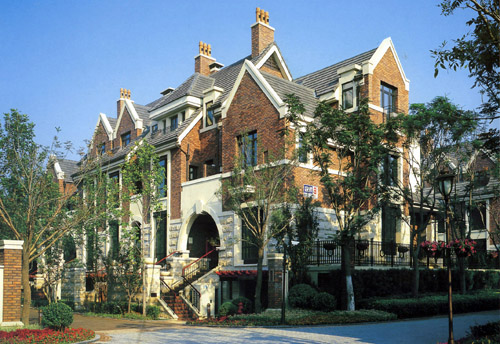 ‘British Style’ Villa in China
‘British Style’ Villa in China
China is known as the world’s hub for production of fake goods. Counterfeiting everything from electronics to clothing and more sinisterly, drywall and milk powder, is an ongoing problem that needs to be addressed. Fortunately the Chinese government is becoming more active in cracking down on individuals involved in intellectual property theft and the production of harmful goods.
Counterfeiting also happens at the urban scale in China. Recently developers from Guangdong Province have taken to planning an exact replica of the Austrian Alpine village of Hallstatt.
Unlike producing fake consumer goods, the legality of appropriating architectural styles from overseas is not clearly defined. In the case of Hallstatt there may be some legal grounds against the Chinese developers due to the village’s status as a UNESCO Heritage site. View full post »



 UNESCO Heritage Site, Longmen Grottoes Stone Carvings near Luoyang, Henan Province. Photo by
UNESCO Heritage Site, Longmen Grottoes Stone Carvings near Luoyang, Henan Province. Photo by 
by Adam Mayer
Howard Mark - The question of why can be answered in this manner. The country has been sequestered for most of its history with the exception of the European and American influence in the 20’s and 30’s and this was not by choice. The addiction to opium brought in by the British from Afghanistan as payment for tea when the British silver reserves were becoming scarce was the west abusing the generosity of the Chinese to export their tea.
Fast forward through the birth of the Republic of China, the cultural revolution and the realization that many hands can make many things cheaper and faster than a few hands and a few things. Sort of like GWs
take on the American economy. Yah makes things and yah sells em.
Now you have a fist full of money, and you want to spend it a house or a car. The cultural history was T-boned by the cultural revolution and the new middle class through the internet and more travel abroad have seen the sights and sounds of the West, and they want it. What is there to want about the houses of the communist and pre-communist era. Housing for the collective? Not today, not tomorrow, not ever. One day maybe and hopefully sooner than later the new Chinese designers will break down the walls that limit their imaginations and the new Asia will soar with kites in the winds change in the Chinese design world.
Adam Nathaniel Mayer - Yes that makes sense…when it comes to the appreciation (or lack thereof) of vernacular architecture, China has not recovered from the damage brought on by the Cultural Revolution. China is still in the phase where anything new is better, but it will be interesting to see what happens in the future as prosperity leads curious designers to begin excavating the past for inspiration. I have already seen some things coming from Chinese architects rediscovering the language of traditional architecture and reinterpreting those lessons into modern design, so that is encouraging.